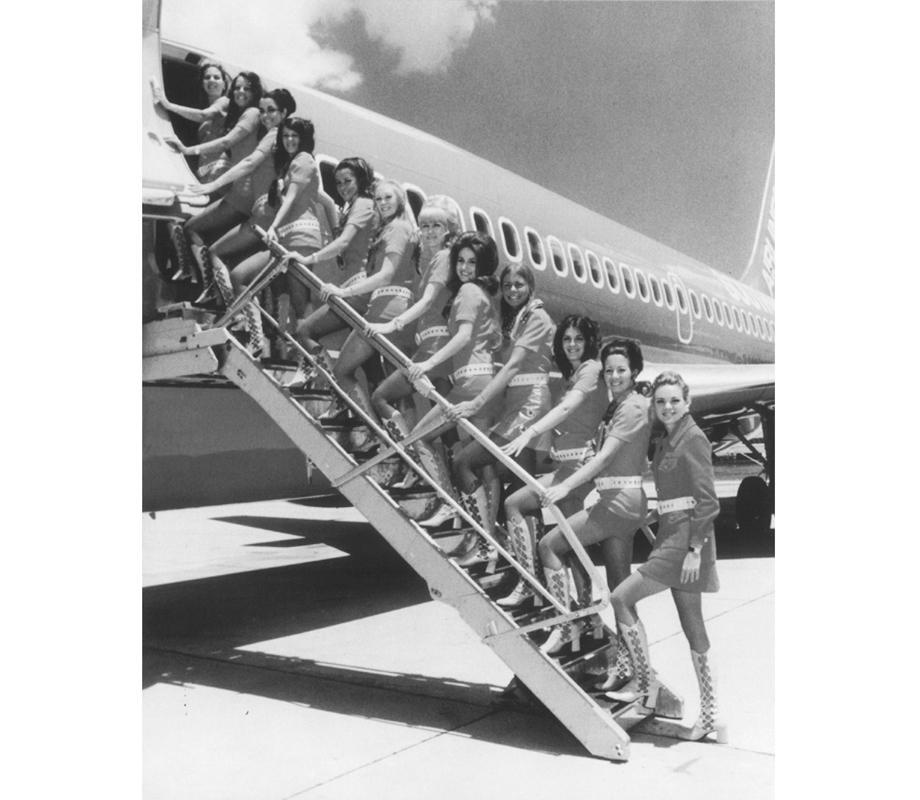At a time when women were expected to stay home with the kids, the 1950s airline stewardess was in a unique position. On the one hand, she doted on her male passengers, upholding America’s conservative gender values; but on the other hand, she was literally a jet-setting career woman, idolized by girls everywhere. The stewardess deftly bridged the gap between the ’50s homemaker and the ’60s career woman. An embodiment of America’s perfect woman, stewardesses graced magazine covers, starred in advertising campaigns, lectured in schools, and hosted White House functions. As stewardesses’ clout and influence grew, they paved the way for 1970s feminism, organized one of the most powerful female labor unions, fought racial discrimination in the workplace, and served as important ambassadors of America in the Cold War. Historian and journalist Victoria Vantoch explores this mythic icon in her book The Jet Sex: Airline Stewardesses and the Making of an American Icon, from which these photos are drawn.
The first stewardess
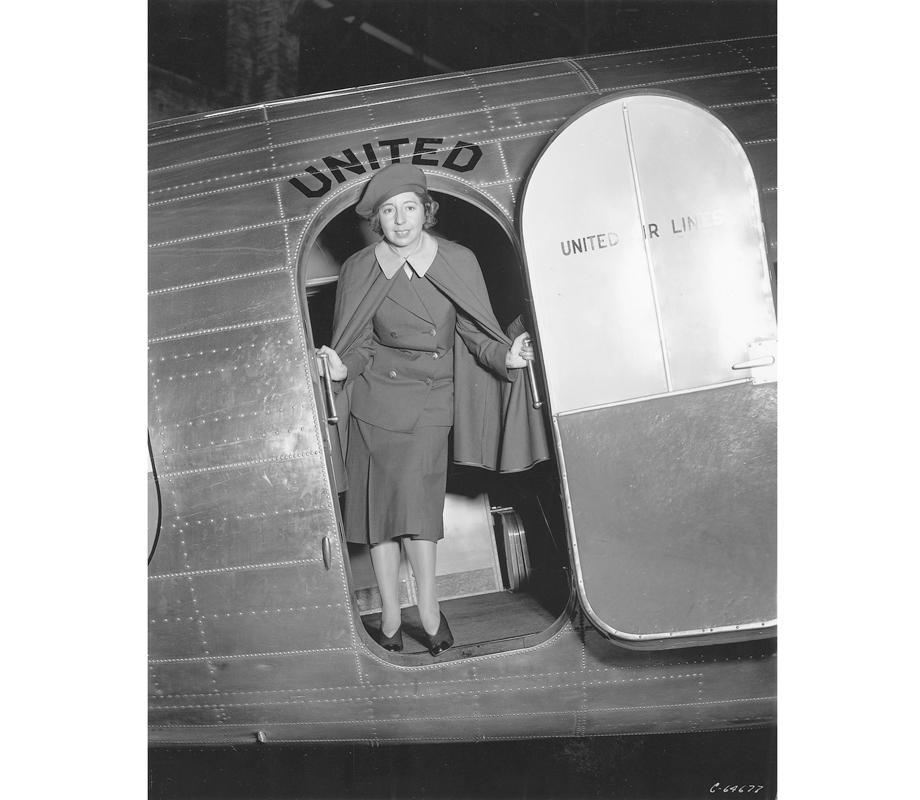
Author’s collection
Ellen Church, a young aviation enthusiast, was determined to fly at a time when airlines did not hire “lady pilots.” In 1930, when Boeing introduced lightning-fast, coast-to-coast service (that took a mere 28 hours), Church pitched the idea of female nurse attendants; she was hired as the first stewardess.
Stewardesses as caregivers
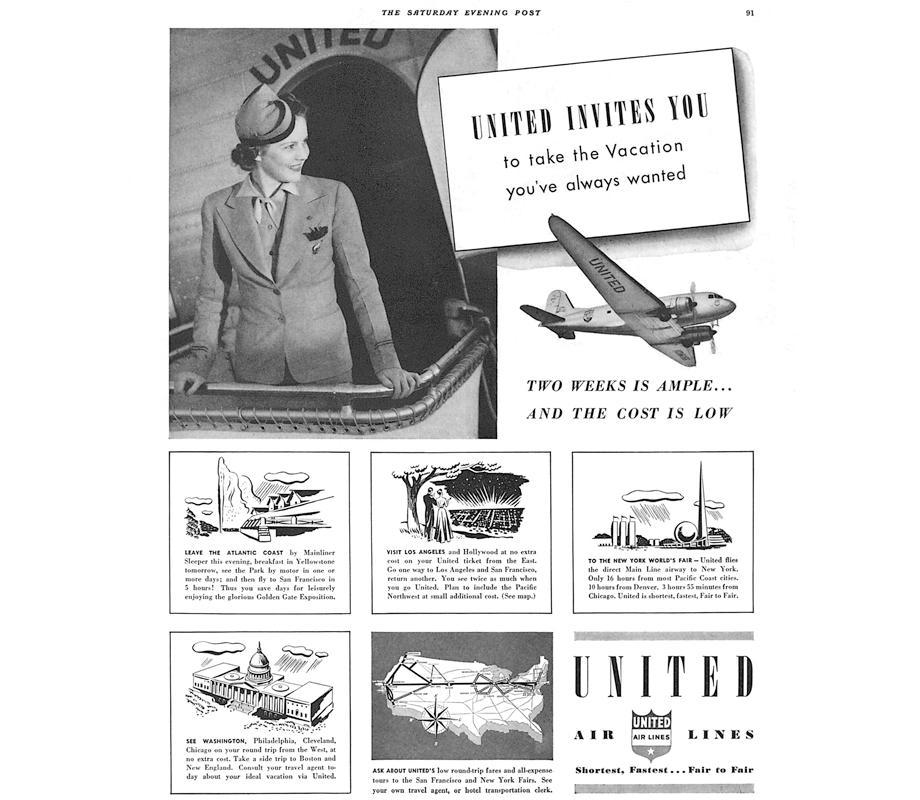
Author’s collection
The first commercial flights were turbulent and dangerous. Airlines primarily served mail routes and relied on male co-pilots—and sometimes male cabin attendants—to serve the occasional passenger. As airlines increased passenger service, they hired stewardesses who were registered nurses, skilled at calming nerves and tending to the airsick.
The impeccable hostess
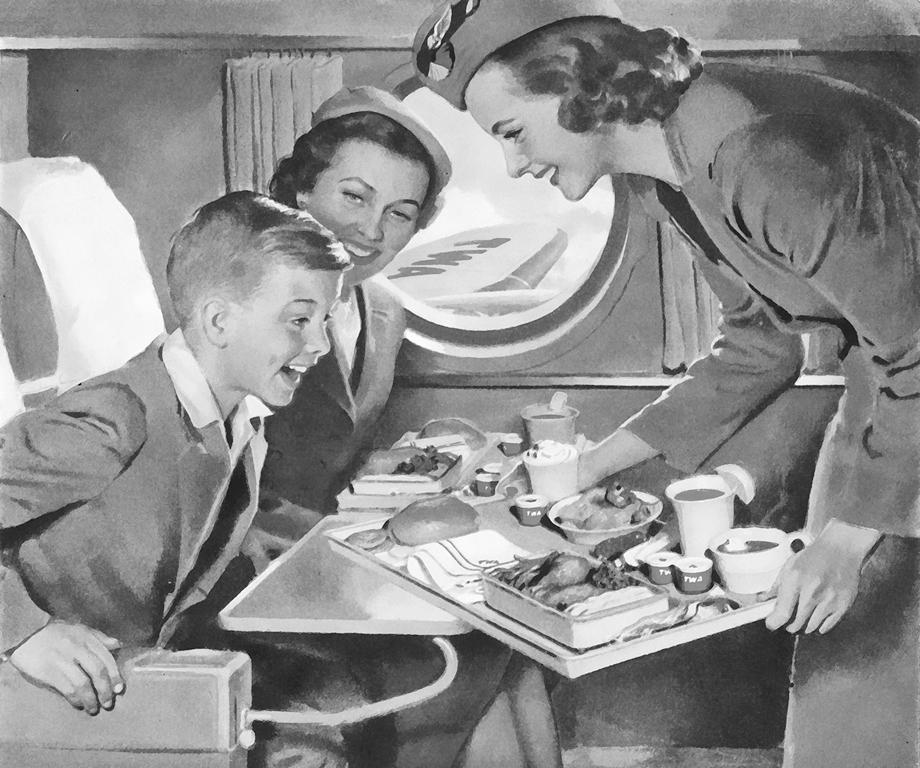
Author’s collection
After WWII, more advanced airplanes and a booming economy lured tens of thousands of passengers aloft, but the rules of the business had changed. Ticket prices were now government-regulated and most airlines flew the same planes, so airlines sought new ways to compete. The linchpin of competition became upscale service and impeccable stewardesses.
The impeccable wife-to-be

Author’s collection
Postwar America was awash with domesticity. Women were expected to become full-time homemakers, who smilingly served casseroles to their husbands. Airline ads of the era portrayed the stewardess as the consummate 1950s woman—a quintessential wife-to-be, who knew how to apply lipstick, pamper men, and mix martinis.
The crème de la crème
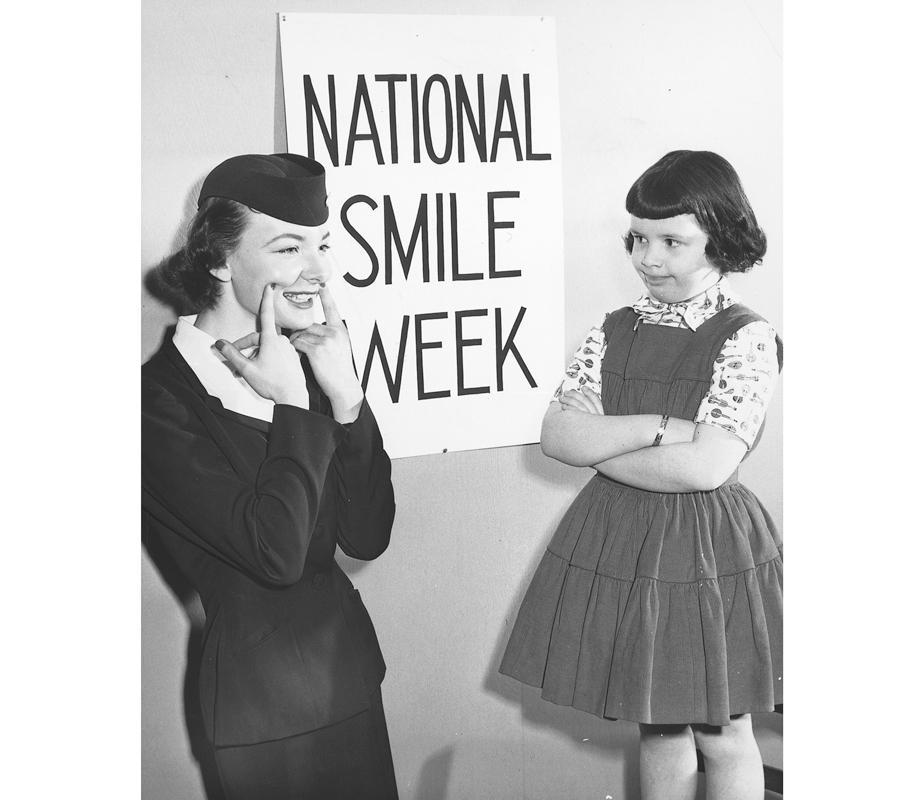
Author’s collection
Hundreds applied for each stewardess position, so airlines chose those they considered the crème de la crème: Recruits were young, unmarried, charming, well-read, slender, pretty, and white. But the stewardess was also an independent trailblazer who bridged the gap between the ’50s homemaker and the career woman of the ’60s.
The skies get a little more equal
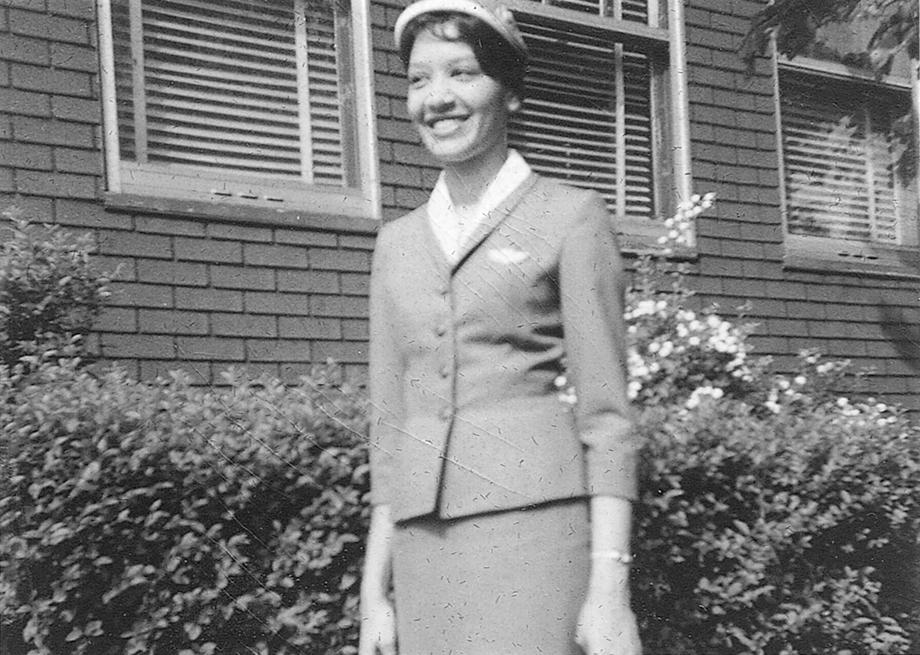
Courtesy of Patricia Banks, author’s collection
Stewardess supervisors were instructed to nix applicants with particular nose shapes, lip shapes, and hair textures. While masquerading as objective beauty standards, these requirements were, in fact, used to exclude minorities from this iconic position. Patricia Banks fought in court from 1956 to 1960 to become one of America’s first African-American stewardesses.
The teasing seductress

Author’s collection
The wholesome girl-next-door stewardess image of the ’40s and ’50s transformed into a teasing seductress in 1965 when Braniff Airlines introduced a new ad campaign, called the “Air Strip,” featuring stewardesses stripping in-flight.
The progressive stewardess
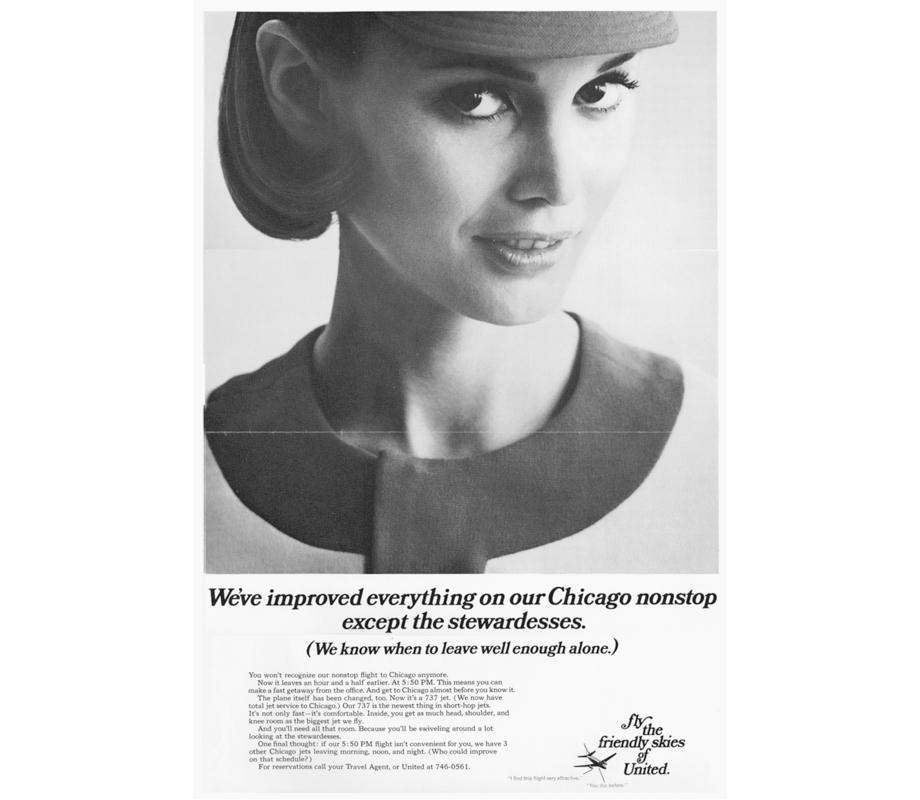
Author’s collection
These sexy Pucci-clad stewardess resonated with America’s new cultural mores that were sweeping the nation in the 1960s. Airlines recognized the buying power of youth and reinvented the stewardess image to appeal to a counterculture that celebrated sexual rebellion.
Trailblazers for workplace equality
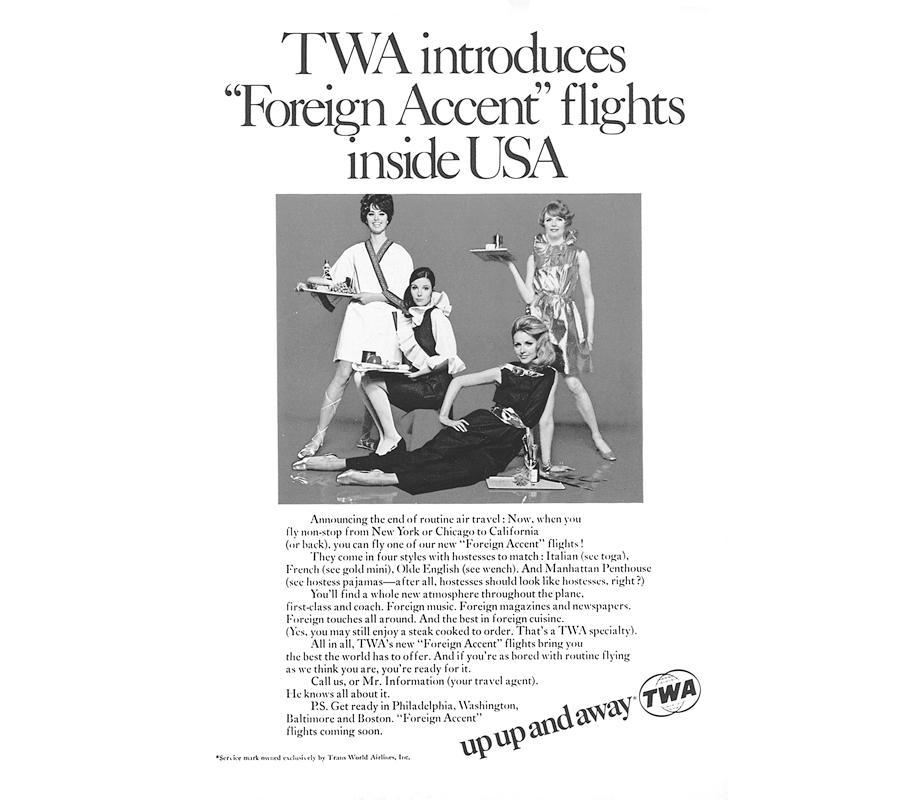
Author’s collection
In 1968, TWA outfitted stewardesses in paper dresses that tore easily in flight. Southwest Airlines’ new uniforms included go-go boots and hot pants. But many stewardesses rebelled against the new, smutty image their airlines were peddling. They protested, sued, and ultimately won some of the first Title VII sex discrimination victories for women in the workforce.
—
The Jet Sex: Airline Stewardesses and the Making of an American Icon by Victoria Vantoch. University of Pennsylvania Press.
See all the pieces in this month’s Slate Book Review.
Sign up for the Slate Book Review monthly newsletter.
